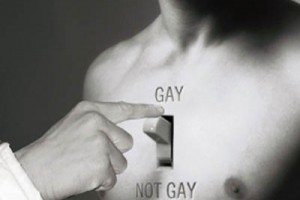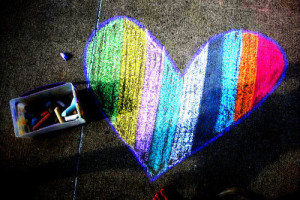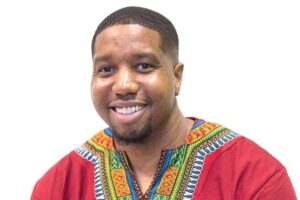Turbo Qualls is a Christian, husband, father, illustrator, musician and works hard at his job. His job is the study of Aesthetics, and his chosen medium for exploring beauty is Eastern Orthodox iconography and tattoo art. Turbo has been tattooing people for fourteen years and has just opened up his own shop in Placentia California near Cal State Fullerton called All-Seeing Eye Art and Design Firm.
What Turbo is able to do with color is amazing. He has created some of the best and most vibrant tattooing I have ever seen. He has also recently illustrated The Queen and the Cats: A Story of Saint Helena as well as A Neclace of Virtues written by Calee Lee. This past April he graduated from St. Stephen’s course in Orthodox theology with an emphasis in Iconology.
Turbo takes the study of Aesthetics extremely seriously. As someone who does not just study beauty at the philosophical level, I thought it would be interesting to get his thoughts on tattooing, culture and beauty.
(N.W.) Do you have a philosophy/theology of aesthetics? If so, what is it?
(T.Q.) When dealing with aesthetics, I endeavor to avoid the subjective facets of the topic and mine for that which is objective. This has paradoxically allowed me to appropriate in a professional context, varied expressions or “styles” of art while reducing the more peripheral qualities in the hope of a greater and more accurate appreciation. That being said, I also recognize that the subjective aspects of aesthetics play a pivotal role for both the individual as well as the collective; in so far as, the appreciation of beauty on a subjective level functions as a key to a doorway of understanding/relationship with the personhood of the Holy Trinity. Again, I must emphasize that is only a key.
(N.W.) So what is the goal of aesthetics?
(T.Q.) In its truest sense, I see the goal of aesthetics as the pursuit of, and desire to, understand beauty in the highest and most definitive quality of humanity. It functions as a mirror and a lodestone. As a mirror, because it reveals our desires and paradigms; furthermore, it places them in such a manner, so that we can begin to unravel the ontological knots if we wish. As a lodestone, because it can indicate the degree in which a person has allowed their paradigm to move from the more base and superficial facets ontologically, and move to those, which are transcendent and objective. Therefore, I see that a proper aesthetic will usher an individual to the ever-unfolding gates of divinity, and because of my apophatic lens, the relative tendencies that are indulged in this arena can become as stepping-stones for the humble. Maurice Sendak leads to Frank Miller, Miller leads to Dante Alighieri and Albrecht Durer, Dante and Durer to Plato and Minoan painting, Plato and ancient Mediterranean art to the Icon, the Icon to Christ. Simply put, I look for the nugget of gold in the big chunk of ore, without despising the ore.
(N.W.) You are really interested in Semiotics. How has this informed you spiritually as well as artistically?
(T.Q.) It has provided a system by which my curiosity and desire to find the essence of communication; or at least, the closest to essence, can be tended to. My first and great love philosophically and spiritually is symbol. I am not as interested in what the culturally perception of a symbol is; rather, the universal and real. By real, I mean powerful and true. This has helped me to not falsely reject that which may fall out of vogue, or that which may become a mockery in society. The cross is a symbol/key to life. This mysterious truth isn’t contingent upon how society views it. It is irrelevant if someone wears it just because they’re Italian, or if it becomes synonymous with right wing hate groups. It holds power. Its message remains true, even in the face of wrongful appropriation. The same can be said for the archetypes found in comic books, or the contemporary faddishness of certain tattoo designs. For those who know the reality behind such things, that power/truth is still accessible.
(N.W.) As well as a tattoo artist you are (or at least are becoming) an accomplished iconographer in the Eastern Orthodox Church. Are there any similarities between these two mediums theologically? For example this summer I received a beautiful Christ icon on my shoulder, where are the overlaps between making an icon and giving me a tattoo of one?
(T.Q.) The approach for both on a technical level holds uncanny similarities. In the icon, theiconographer moves from dark to light. This represents the ontological development of the human being. We are brought from dark to light by God’s grace. The line is also an important aspect to this icon, for in it harmony and clarity are enforced. Interestingly, the longevity of the work itself is important. The icon must be done in such a way that it will endure. All these things are true for the tattoo! On a personal level, there is just as much prayer and focus in approaching both. What differs is the mode, but the intent of my heart towards both mirrors each other.
(N.W.) Tattoos hurt yet Christians still get them. Say something about the relationship between the pain, beauty, and theology.
(T.Q.) Christianity is an ascetic religion. Regardless of how it is understood or practiced in this modern age, at its roots this is what it is. St. Paul said in 1 Cor. “But I buffet my body, and bring it into bondage: lest by any means, after that I have preached to others, I myself should be rejected.” Up until very recently, it was a given that one must struggle to attain the fruits of the kingdom, not just spiritually, but physically. In Hebrews, the roster of faith, the lineage, of the patriarchs, is comprised of those who struggled in ascetic endeavor. We in North America have lost any sense of this. Furthermore, this is compounded by the lack of any real rite of passage, which has been practiced universally since antiquity. I believe this is a unique convergence that has facilitated the popularity and growing acceptance of Christian tattoos.
(N.W.) In the past few years you have converted to Eastern Orthodox from a Reformed theological community. You sighted Protestantism’s lack of beauty in the church as a major part of your decision in becoming orthodox. Can you talk a little bit about your process?
(T.Q.) My experience with the Icon is truly the catalyst for that change. Prior to this experience I led a bible study for a community that was also a burgeoning art collective. Our love for Christ and our desire to see our love and talent for art brought us together. We were tired of sitting in churches that looked like cafeterias, bad coffee houses and faux warehouses among other things. The lack of art was not only glaringly obvious it was discouraging. I honestly don’t hold any conscious memory of seeing an Icon before. I defiantly was not conscious of what it was if I had. I believe it was seeing it in a proper context that really facilitated my eyes being “opened” to it. The Icon belongs in a prayerful setting, a home or church; either way, this is how it should be encountered, and this is how I was awoken to it. From there the process was really an organic one. I began to use them in my prayer life, and as a means to engender a greater “church” aesthetic for our group. The doctrinal understanding came only after I acknowledged the single most essential truth to the Icon: it [is] the proclamation to the incarnation. Period.





7 Comments
Leave your reply.